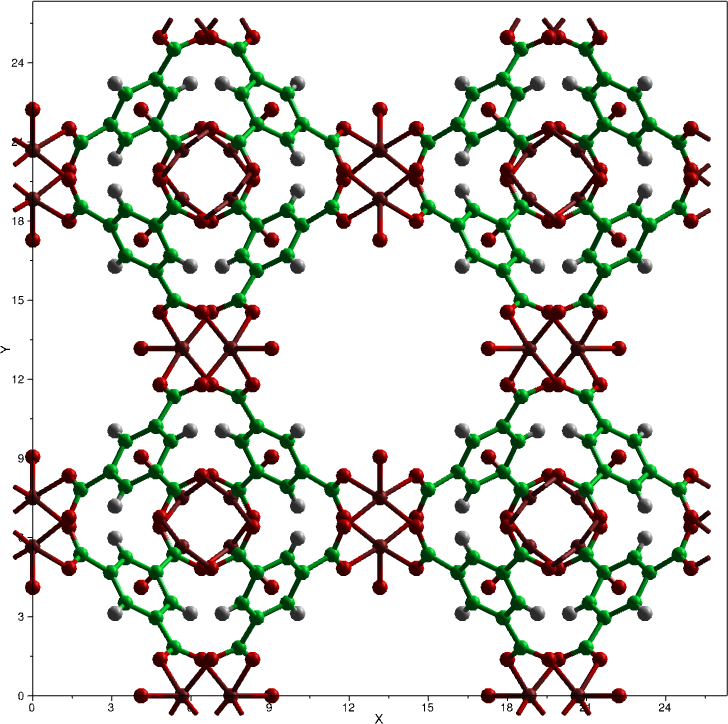Step 1 - Import the CIF
Our first task is to import the CIF file - Dissolve has a wizard to help you do this, and which also allows some tidying of the imported coordinates, replication of the unit cell to create a supercell etc.
Species ⇨ Import ⇨ From CIF…
On the top left-hand you will see the Source CIF section, click the icon to open the file selector
Select the relevant CIF file (
7108574.cif)
Dissolve will parse the CIF and display some basic information from it such as the authors (Peikert, Hoffmann, and Froba), publication reference, and space group (Fm-3m).
You can change the space group from the drop-down menu.
The viewer will now be showing you the unit cell and its contents as determined from the CIF (you might need to zoom out or rotate the view a bit to see something meaningful). If you open the tab, you will have some broad choices on the tolerance for removing overlapping atoms (which arise from defined symmetry generators creating symmetry-identical copies). In the tab, you have some choices for how connectivity between atoms is calculated (either by Dissolve or from defined bond distances in the CIF) and which structural assemblies / groups (typically arising from disordered moieties in the determined crystal structure) are used.

Basic Cu-BTC unit cell
The default options get us most of the way there, but it’s instructive to take a look at the
that were detected in the CIF. An assembly is a set of symmetry-unique atoms that have one or more configurational states (i.e. they have different positions) and can represent disorder, different conformers of molecules, or even completely different molecules within the same unit cell. If you look at Peikert, Hoffman, and Froba’s original paper you’ll see that the focus is on an amino derivative of the BTC linkers, and both the original Cu-BTC and the amino-substituted structure are represented in the CIF. The default assembly/group combination of Global/Default, B/Default and A/1 gives the normal Cu-BTC structure, while disabling A/1 and enabling B/2 and C/2 gives you the amino-substituted version.
Before we proceed, make sure that the default Cu-BTC groups (Global/Default, B/Default, and A/1) are the only ones enabled.
Now, if you look closely at the crystal structure you’ll see some oxygen atoms floating around in space…

Dangling oxygens on Cu sites
These are in fact from coordinated water molecules present when the crystal structure was determined - the water hydrogen atoms are not present in the CIF data. We will remove these oxygen atoms since we want a perfectly “dry” unit cell.
Open the section
The Structure Cleanup page has several options for cleaning up various aspects of the structure we currently have, for example removing free atoms/ions. There is a specific option for removing water molecules (Remove water and coordinated oxygens) which will also remove terminal oxygen atoms based on the assumption that hydrogen positions were not available in the CIF. Ours are just free atoms, however, so:
Enable the Remove unbound atoms option
You should see those terminal oxygen atoms disappear from the structure, leaving us with a “pure” Cu-BTC framework. There are a couple of pages left in the wizard which allow us to create a supercell from the unit cell,
Click to complete the dialog and generate the Cu-BTC species
Our new species not only contains the atoms of the framework, but also the unit cell (or supercell) definition. You will also see that a Configuration has been added which represents the unit cell by referencing the periodic species.